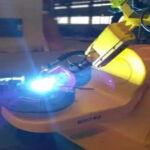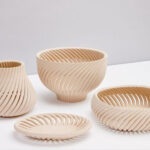Manufacturers designing piping components or components need to adopt anti-corrosion strategies to protect their products and reputation. They have several options for obtaining corrosion resistance: they can specify the manufacturer to use corrosion-resistant metal or use paint or powder coating, or they can specify that the metal should be plated.
Successful electroplating, especially the successful electroplating of pipeline products, depends on many factors, including how the manufacturer demonstrates its products to the electroplater and the performance of the electroplating machine. These factors can have a significant impact on the final result, and it is important that manufacturers and electroplaters communicate with each other to understand their respective responsibilities in achieving the best results.
Manufacturers usually start with a common question—”electroplating or molding first?”—which can lead to many other problems. Exploring the answers to many questions surrounding the shape of the tubular coating is the way to successfully finish the finish.
Choose a plating partner
Table of Contents
Although most electroplating machines are qualified and successful among the customers they serve, not all electroplating machines can meet the electroplating goals of every manufacturer. The physical equipment, ability, experience, electroplating technology and auxiliary operations of electroplaters vary.
The main goal of the manufacturer is to find an electroplating machine that meets the manufacturer’s needs. Therefore, its initial problems for the plate maker should be addressed to the plate maker’s ability, specific process and relevant experience. For example, knowing the number and size of the gold-plating machine’s water tank can help manufacturers measure the ability of the gold-plating machine to complete the job, and may provide insight into the production capacity of the gold-plating machine. And, of course, the process used by the electroplating machine helps determine whether it can handle the manufacturer’s application.
Other basic issues may be secondary in nature, but are equally important for finding an electroplating machine that can provide all the required services.
Will grit blasting or corrosion of the electroplating machine interfere with successful electroplating (see Figure 1)? How to deal with cleaning and plating accessories that may be included in the product? Is its storage tank not only large enough to contain all the products, but also deep enough to angle the pipe or pipe to promote adequate plating solution coverage and drainage? How to store the coated steel pipe after plating?
Most importantly, are electroplaters willing to work closely with manufacturers to solve potential challenges before successful electroplating?
Electroplated straight steel pipe
Regarding electroplated tubes, the most common problem is straight or shaped products. Is it more effective to plate and then form, or form and then plate? The answer is: “It depends on the situation.”
For components with one or more hard bends (ie, bends close to 90 degrees), it is usually best to electroplate before forming. The preparation of the coating involves bath immersion in a cleaning solution to remove rust on the inner and outer diameters of the pipe or pipe. This is most effective when the solution can reach all internal and external surfaces and can be completely drained after coating. See Figure 2). This can be challenging when the elbow catches air pockets, preventing the solution from reaching the entire ID surface and may leave some rust or scale on the surface.
Straight products are easy to plate and handle, and are easily lost after plating, making the process more cost-effective. In addition, straight components can be packed more densely on the plating rack, and for this reason, they can be packed more densely for transportation to and from the electroplating machine by truck, thereby reducing transportation costs.
If the manufacturer chooses to plate after molding, can the intended plater handle the molded part? The tank size and configuration of the electroplating machine may be a limiting factor. In addition, the processing of formed pipe fittings and pipe fittings requires experience and skills in manipulating components to achieve the coverage of all electroplating solutions, and then promote all drainage after electroplating. Such manufacturing also requires a more extensive drying process, which ultimately increases working time and cost.
On the other hand, depending on the number and severity of the bends, parts involving less rapid bends may be almost as easy to handle and plate as straight parts.
Forming after plating
A related issue involves potential problems that may arise during forming after electroplating. Completing a 90-degree bend will cause damage to the coating on the OD; smaller angles are not easy to damage. On ID, areas that may not have been thoroughly cleaned before electroplating may be difficult for the electroplater to clean. Even the diameter is a factor, because during the bending process, a workpiece with a smaller diameter is subjected to greater stress than a workpiece with a larger diameter.
Although the coating remains in place after molding, the adhesion may not be as strong as before molding. Therefore, it is necessary to limit the thickness of the plating layer to reduce the risk of adhesion failure. Welding, joints and accessories may also present similar challenges. Brazing the terminal joint to the pipe will expose the joint and the rest of the local area to a lot of heat, which will accelerate the rust on the ID. In addition, if the pipe is moved during the electroplating process, it may result in unplated points on the pipe, which need to be manually repositioned in the middle of the electroplating process.
Clean before plating
On-site cleaning of the electroplating machine can easily remove most grease, oil, light dirt and light rust. The manufacturer is responsible for removing heavy ID rust (especially on elbows) and heavy dirt (such as dirt around brazed fittings). In addition, not all electroplating machines have the ability to clean hard-to-reach inner surfaces, so the manufacturer should confirm with the electroplating machine.
Manufacturers should be aware that if there is a delay before plating, rusted areas that are not thoroughly cleaned may continue to grow. This issue is especially important when dealing with small diameter workpieces, such as pipes used in brake lines and other hydraulic applications. Corrosion and residual debris can clog small IDs, which is why it is important to eliminate all ID rust and debris.
Choose the most effective coating
Many electroplating materials can be used, but despite the many options, most pipes and pipe products are treated with zinc (galvanized). Zinc is commonly used because it is easily available and cost-effective.
Galvanizing bath types include acid zinc, alkaline (non-cyanide) and alkaline (cyanide). The specific selection must correspond to the desired corrosion resistance result, which must be related to how the workpiece is used. It is important that the manufacturer understand the difference and confirm that the electroplater uses the method most suitable for the application.
For the straight section, for example, an acidic or alkaline plating solution can be used. Both methods can provide successful results, but alkaline solutions can provide a better anti-rust coating. It also produces a more ductile coating, which reduces the risk of adhesion failure during subsequent molding operations.
Storage of electroplated products
After the plating operation is completed, the potential challenges will not disappear. The electroplating personnel should ensure that the parts are dry before packaging. Once packaged, the drying process basically stops. Restricted air circulation limits the drying process. The remaining moisture will cause the coating to degrade.
Similarly, if condensed water is introduced during or after the packaging process, the packaged parts will not dry out. If the parts are stored in a humid environment or the temperature fluctuates greatly to form condensate, the residual moisture will remain on the parts.

Collaboration-the most effective plating tool
The manufacturer knows its products and the needs in the electroplating process; the electroplating machine has rich experience in electroplating various products. Through mutual communication and collaboration, they can jointly identify challenges, formulate strategies to overcome them, and obtain the best solution for each electroplating project.
Before starting electroplating, the processing sequence (bending first or electroplating first), cleaning before electroplating, and storage methods must be thoroughly discussed and agreed. All these considerations must be optimized, so the electroplating process is the best from the start. Cannot choose to redo.
When this kind of cooperation is carried out and all parties apply their expertise, the process will proceed as smoothly and successfully as possible.
Link to this article: What should be paid attention to in electroplating?
Reprint Statement: If there are no special instructions, all articles on this site are original. Please indicate the source for reprinting:https://www.cncmachiningptj.com/,thanks!
 Sheet metal, beryllium, carbon steel, magnesium, 3D printing, precision CNC machining services for heavy equipment, construction, agriculture and hydraulic industries. Suitable for plastics and rare alloys machining. It can turn parts up to 15.7 inches in diameter. Processes include swiss machining,broaching, turning, milling, boring and threading. It also provides metal polishing, painting, surface grinding and shaft straightening services. The production range is up to 50,000 pieces. Suitable for screw, coupling, bearing, pump, gearbox housing, drum dryer and rotary feed valve applications.PTJ will strategize with you to provide the most cost-effective services to help you reach your target,Welcome to Contact us ( [email protected] ) directly for your new project.
Sheet metal, beryllium, carbon steel, magnesium, 3D printing, precision CNC machining services for heavy equipment, construction, agriculture and hydraulic industries. Suitable for plastics and rare alloys machining. It can turn parts up to 15.7 inches in diameter. Processes include swiss machining,broaching, turning, milling, boring and threading. It also provides metal polishing, painting, surface grinding and shaft straightening services. The production range is up to 50,000 pieces. Suitable for screw, coupling, bearing, pump, gearbox housing, drum dryer and rotary feed valve applications.PTJ will strategize with you to provide the most cost-effective services to help you reach your target,Welcome to Contact us ( [email protected] ) directly for your new project.
Link to this article:What should be paid attention to in electroplating?
Reprint Statement: If there are no special instructions, all articles on this site are original. Please indicate the source for reprinting.:Cnc Machining,Thank!^^








